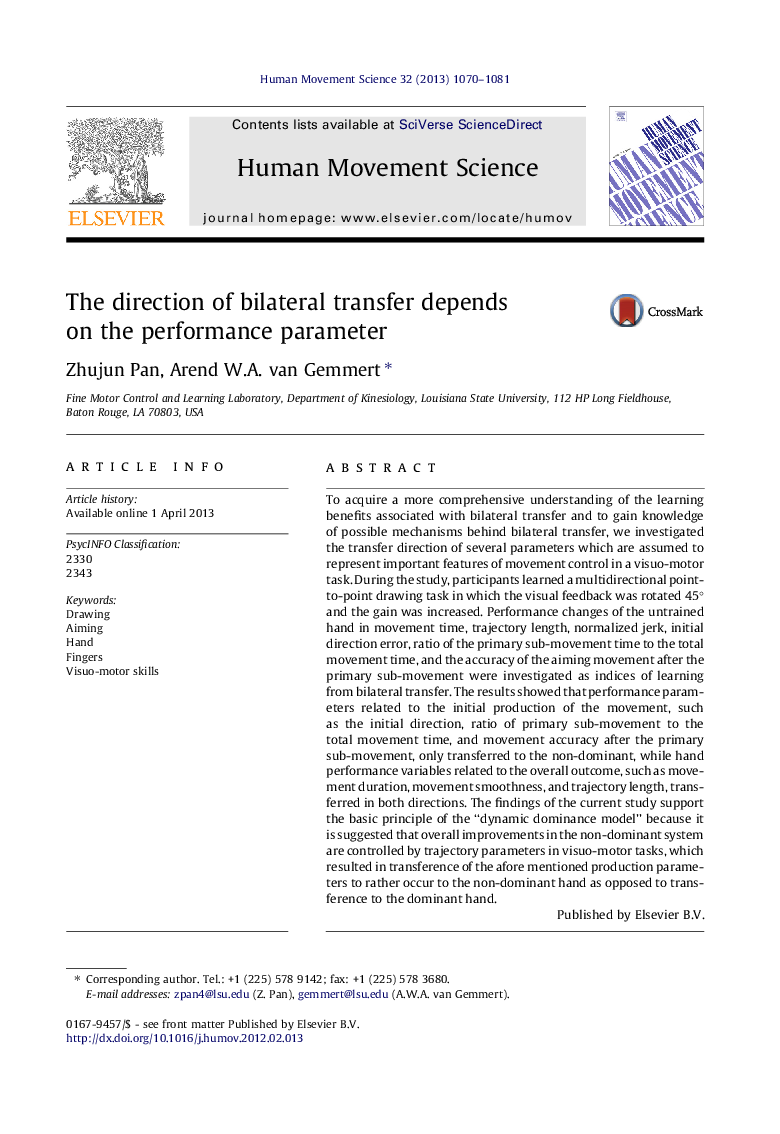| Article ID | Journal | Published Year | Pages | File Type |
|---|---|---|---|---|
| 928355 | Human Movement Science | 2013 | 12 Pages |
To acquire a more comprehensive understanding of the learning benefits associated with bilateral transfer and to gain knowledge of possible mechanisms behind bilateral transfer, we investigated the transfer direction of several parameters which are assumed to represent important features of movement control in a visuo-motor task. During the study, participants learned a multidirectional point-to-point drawing task in which the visual feedback was rotated 45° and the gain was increased. Performance changes of the untrained hand in movement time, trajectory length, normalized jerk, initial direction error, ratio of the primary sub-movement time to the total movement time, and the accuracy of the aiming movement after the primary sub-movement were investigated as indices of learning from bilateral transfer. The results showed that performance parameters related to the initial production of the movement, such as the initial direction, ratio of primary sub-movement to the total movement time, and movement accuracy after the primary sub-movement, only transferred to the non-dominant, while hand performance variables related to the overall outcome, such as movement duration, movement smoothness, and trajectory length, transferred in both directions. The findings of the current study support the basic principle of the “dynamic dominance model” because it is suggested that overall improvements in the non-dominant system are controlled by trajectory parameters in visuo-motor tasks, which resulted in transference of the afore mentioned production parameters to rather occur to the non-dominant hand as opposed to transference to the dominant hand.
